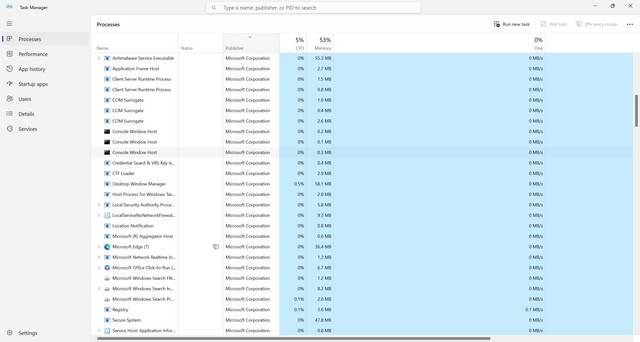The Print Spooler process is a crucial component of the Windows operating system that manages print jobs sent to a printer or print server. It plays a vital role in ensuring smooth printing operations and maintaining a queue of print jobs. If you have ever opened the Task Manager on your Windows computer, you might have noticed the Print Spooler process running in the background. In this article, we will explore why the Print Spooler process is running in Task Manager and its significance in the printing ecosystem.
Understanding the Print Spooler Process
The Print Spooler process, also known as spoolsv.exe, is responsible for managing print jobs in the Windows operating system. When you send a document to the printer, it gets added to the print queue, which is then processed by the Print Spooler. The Print Spooler ensures that the print jobs are executed in the order they were received and handles any errors or issues that may arise during the printing process.
The Print Spooler process runs in the background and is started automatically when you start your computer. It remains active until you shut down your computer or manually stop the Print Spooler service. The process is essential for the proper functioning of the printing system and allows multiple users to send print jobs simultaneously without conflicts.
Why Is the Print Spooler Process Running in Task Manager?
When you open the Task Manager on your Windows computer, you may notice the Print Spooler process running in the background. This is completely normal and indicates that the Print Spooler service is active and ready to manage print jobs. The presence of the Print Spooler process in Task Manager is not a cause for concern unless it is consuming an unusually high amount of system resources or causing performance issues.
If you are experiencing issues with your printer or print jobs, it is worth checking the Print Spooler process in Task Manager to ensure it is running. If the process is not running, it may indicate a problem with the Print Spooler service, and you may need to restart it to resolve any printing issues.
Common Issues with the Print Spooler Process
While the Print Spooler process is generally reliable, there are instances where it may encounter issues that can disrupt printing operations. Some common issues with the Print Spooler process include:
- Print jobs getting stuck in the print queue
- Print Spooler service not starting or stopping unexpectedly
- Print Spooler consuming excessive system resources
- Print Spooler crashing or freezing
If you encounter any of these issues, it is recommended to troubleshoot the Print Spooler process to restore normal printing functionality. One common troubleshooting step is to restart the Print Spooler service, which can be done through the Services management console in Windows.
Protecting the Print Spooler Process from Malware
While the Print Spooler process is an essential component of the Windows operating system, it has also been targeted by malware in the past. Malicious actors have exploited vulnerabilities in the Print Spooler to gain unauthorized access to systems or execute arbitrary code.
To protect your computer from potential Print Spooler-related security risks, it is crucial to keep your operating system and antivirus software up to date. Regularly installing Windows updates and running scans with reputable antivirus software, such as Malwarebytes Free, can help detect and remove any malware that may be targeting the Print Spooler process.
Conclusion
The Print Spooler process is an integral part of the Windows printing system, responsible for managing print jobs and ensuring smooth printing operations. Its presence in the Task Manager indicates that the Print Spooler service is active and ready to handle print jobs. While issues with the Print Spooler process can occur, they can usually be resolved by restarting the Print Spooler service or troubleshooting the underlying problem.
It is important to stay vigilant and protect the Print Spooler process from potential security risks by keeping your operating system and antivirus software up to date. By following these best practices, you can ensure a reliable and secure printing experience on your Windows computer.











